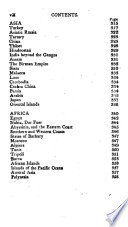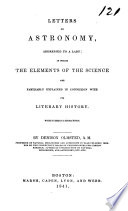 | Jedidiah Morse - Geography - 1814 - 378 pages
...cenlripeltd force ; and that which impels them forward in straight lines, the centrifugal force. A body is said to be in conjunction with the sun when it is seen in the same point of the heavens ; and in opposition, when it is 180 degrees distant : or, in... | |
 | Jedidiah Morse - Geography - 1818 - 384 pages
...centripetal force ; and that which impels them forward in straight lines, the centrifugal force, A. body is said to be in conjunction with the sun, when it is seen in the same point of the heavens ;.and in opposition, when it is 180 degrees distant : or, in... | |
 | Denison Olmsted - Astronomy - 1839 - 300 pages
...greatest elongations, and will appear no further from the sun than the arc S'A' or S'B' respectively. 218. A planet is said to be in Conjunction with the sun, when it is seen in the same part of the heavens with the sun, or when it has the same longitude. Mercury and Venus... | |
 | Denison Olmsted - Astronomy - 1839 - 306 pages
...greatest elongations, and will appear no further from the sun than the arc S'A' or S'B' respectively. 303. A planet is said to be in conjunction with the sun, when it is seen in the same part of the heavens with the sun, or when it has the same longitude. Mercury and Venus... | |
 | Denison Olmsted - Astronomy - 1841 - 486 pages
...of its greatest elongations ; being at all other times so near the sun as to be lost in his light. A planet is said to be in conjunction with the sun when it is seen in the same part of the heavens with the sun. Mercury and Venus have each two conjunctions, the... | |
 | Denison Olmsted - Astronomy - 1855 - 318 pages
...respecting the difficulty of seeing Mercury ? Explain by figure 40. MERCURY AND VENUS. Fig. 40. 218. A planet is said to be in conjunction with the sun, when it is seen in the same part of the heavens with the sun, or when it has the same longitude. Mercury and Venus... | |
 | Denison Olmsted - Astronomy - 1855 - 484 pages
...of its greatest elongations ; being at all other times so near the sun as to be lost in his light. A planet is said to be in conjunction with the sun when it is seen in the same part of the heavens with the sun. Mercury and Venus have each two conjunctions, the... | |
 | Denison Olmsted - Astronomy - 1858 - 454 pages
...of its greatest elongations ; being at all other times so near the sun as to be lost in his light. A planet is said to be in conjunction with the sun when it is seen in the same part of the heavens with the sun. Mercury and Venus have each two conjunctions, the... | |
 | Elias Loomis - Astronomy - 1866 - 384 pages
...from the sun ; and it is east or west, according as the planet is on the east or west side of the sun. A planet is said to be in conjunction with the sun when it has the same longitude, being then in nearly the same part of the heavens with the sun. It is said... | |
 | Elias Loomis - Astronomy - 1870 - 398 pages
...from the sun ; and it is east or west, according as the planet is on the east or west side of the sun. A planet is said to be in conjunction with the sun when it has the same longitude, being then in nearly the same part of the heavens with the sun. It is said... | |
| |